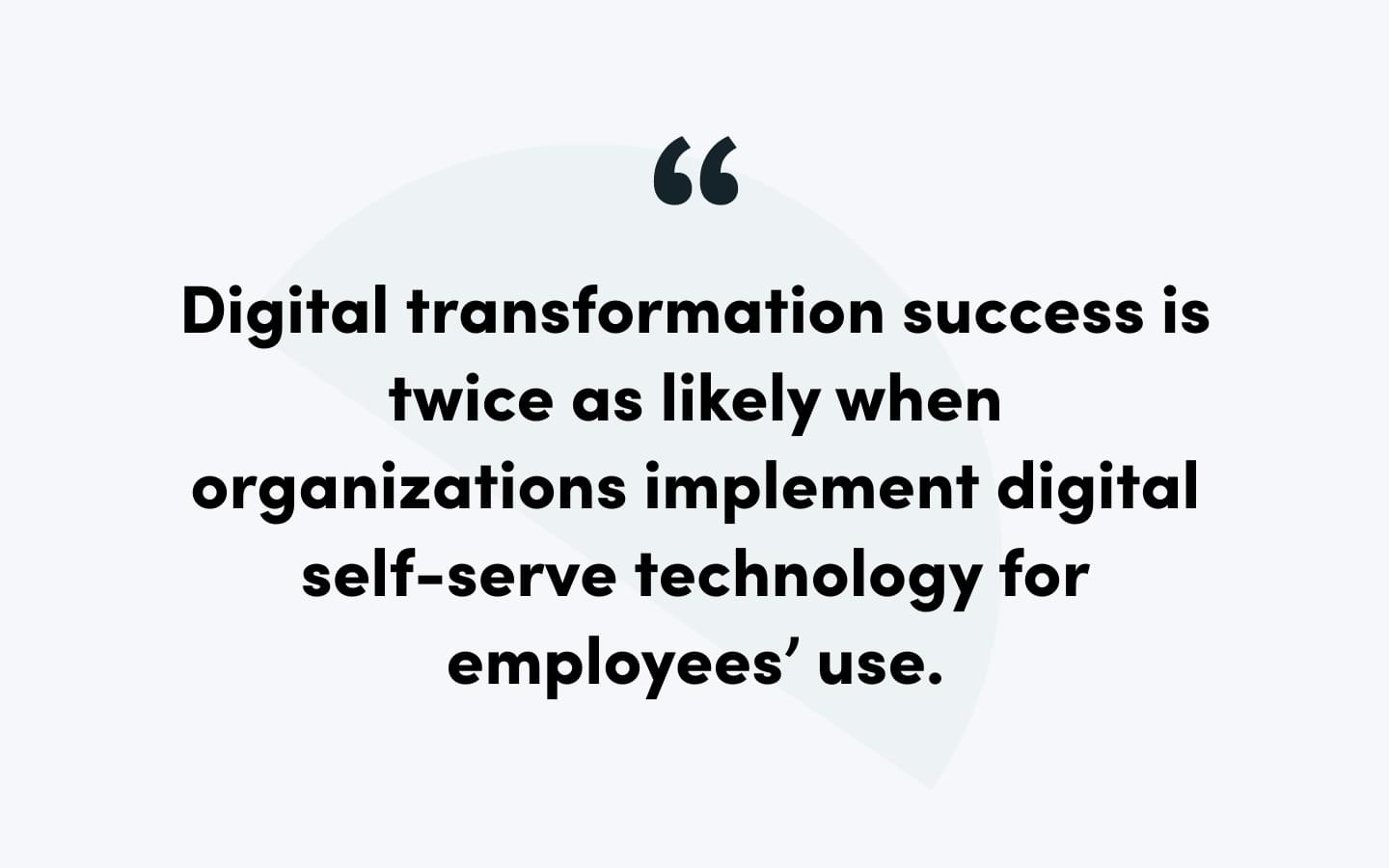Annual worldwide spending on digital transformation is forecasted to reach $2.3 trillion by 2023. With so many companies digitizing, your organization will need to continue to research, invest, and implement new technology solutions if you want to provide top-notch customer experiences and stay ahead of your competition.
But breaking down data silos, getting company buy-in, and challenging the status quo can be difficult. However, there are ways to better manage your tech stack in the midst of change. Read on to discover how to avoid implementation failure and find the road to successful solutions.
Avoid Digitization Failure
70% of digital transformation initiatives fail to reach their goals. Why? It can be a combination of many factors, like:
- Not enough time
- Too little planning
- Minimal budget
- Picking the wrong solutions
- Failing to get colleague buy-in
To avoid your organization falling behind with failed software implementation, you must first take stock of the systems you do have. Where are employees wasting the most time? Which systems don’t talk to each other? Are paper-based processes being used? Where is manual data entry introducing errors and slowing down communication? Knowing the answers to those questions can you help you find the tools and solutions that will bring you as close to true efficiency as you can get.

Once you’ve done that initial research into your own company, source tools that combine several solutions into one—like offering automated workflows, document generation, and eSignature collection. This ensures you have tools that communicate and share data, which can save your team up to 17 hours a week on average. Plus, not only is it typically more cost effective, but it cuts down on the number of overall systems, resulting in fewer headaches for IT teams and employees alike.
Get Colleagues Onboard
To succeed, you’ll have to get employees and colleagues to give up the “its always been done this way” mindset and see the value in the new tools you want to implement. To do this, hold trainings and meetings where each team member can directly see where this new technology will save them time and energy. If done right, your fellow employees will start their own grassroots movement to get these new solutions added ASAP. But it all depends on showcasing just how time-saving these solutions will be.
With that in mind, it’s crucial to pick the right employees to lead the change. You need ones with growth mindsets who understand the current workflows of your organization. This way, they are better situated to spot hold-ups and identify potential solutions.
Learn More: See what makes an organization digitally mature when you read our State of Digital Maturity: Advancing Workflow Automation report.
Empower Employees with the Best Tools
Digital transformation success is twice as likely when organizations implement digital self-serve technology for employees’ use. However, typically, employees aren’t empowered with tech to solve problems or change business processes on-the-fly. This results in backlogs, poor communication, data silos, and headaches all around.

No-code workflow solutions, for example, empower anyone in your organization to create the solutions they need. That could be anything from online patient intake forms to contracts generated with pre-filled data. When employees don’t have to know coding or bother the IT department to get things done, it can rapidly speed up production and communication while enhancing the customer experience.
READ NEXT: Low-Code Versus No-Code: What’s the Difference?
Additionally, look into solutions with a wide variety of integrations with products like Salesforce that you already depend upon. You’ll save countless hours not having to transfer data and you won’t risk human error impacting your data because of manual entry. Some solutions and tools also offer you the option of using Single Sign-on (SSO) integrations that allow users to employ one login across multiple sites. That way, no one has to mitigate multiple user names and passwords.
Learn More: What Is Formstack's SSO Feature?
Digitization is the Future
Giving your employees the tools to combat problematic processes empowers them to feel in control of their jobs and makes them more likely to succeed. When employees feel more fulfilled by their work, it’s easier to retain them. And amidst the Great Resignation, that is no small feat.
It all comes down to putting a plan in place today so you’re ready for the future tomorrow. And if you do that, you’ll be on your way to leading a successful tech transformation.
To learn more about how Formstack’s suite of workflow productivity tools can help you transform digitally, check out our all-in-one workflow solution.











